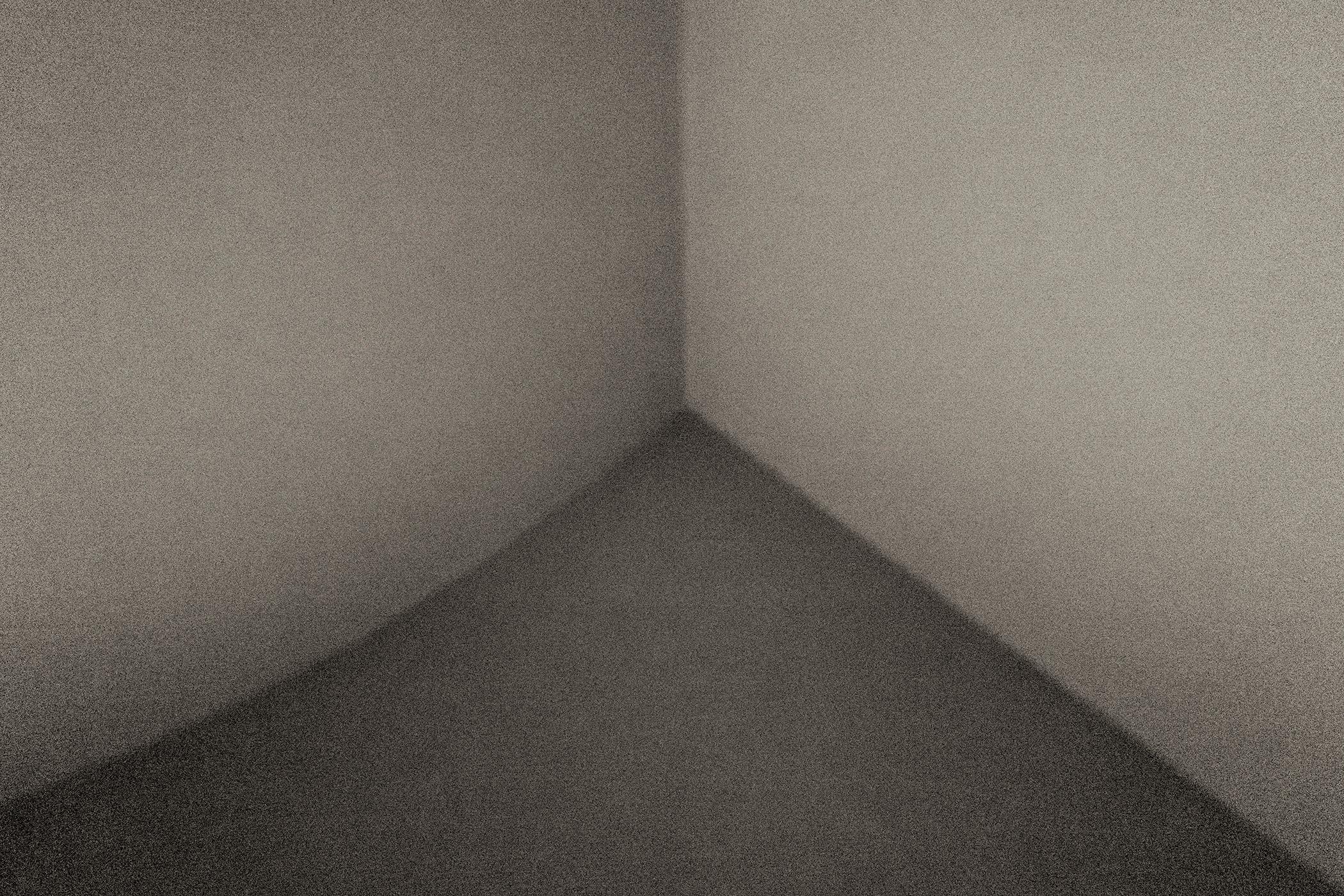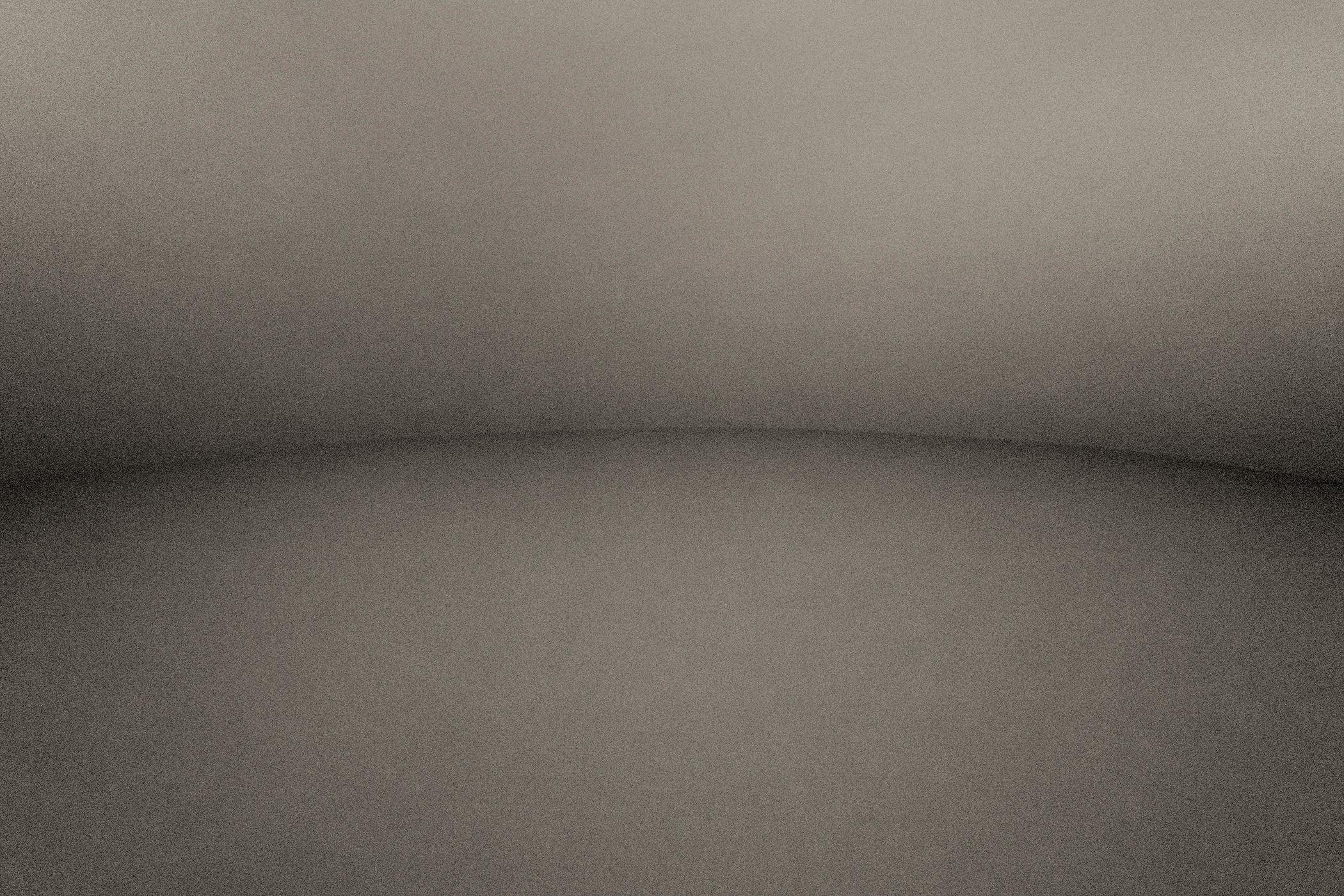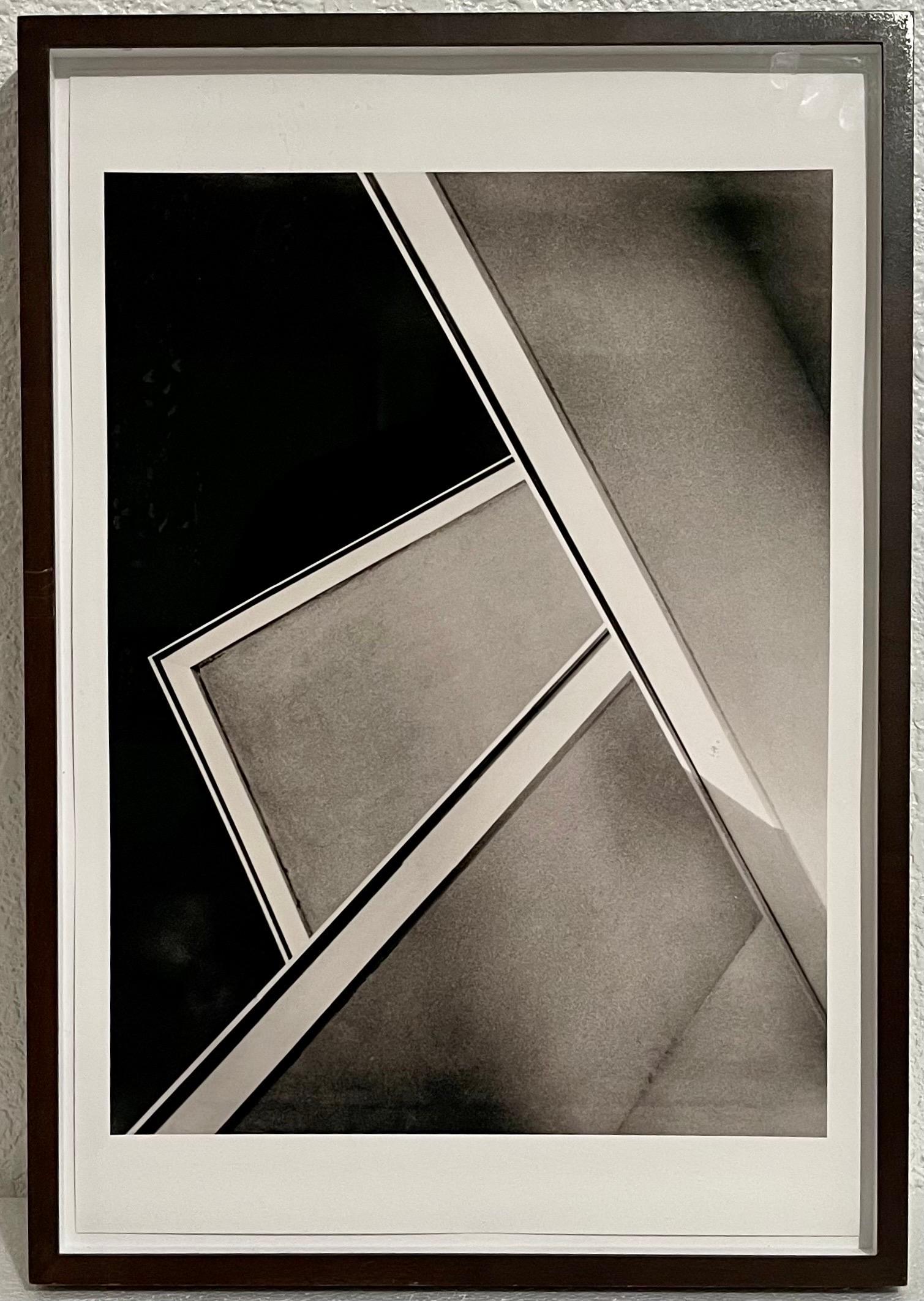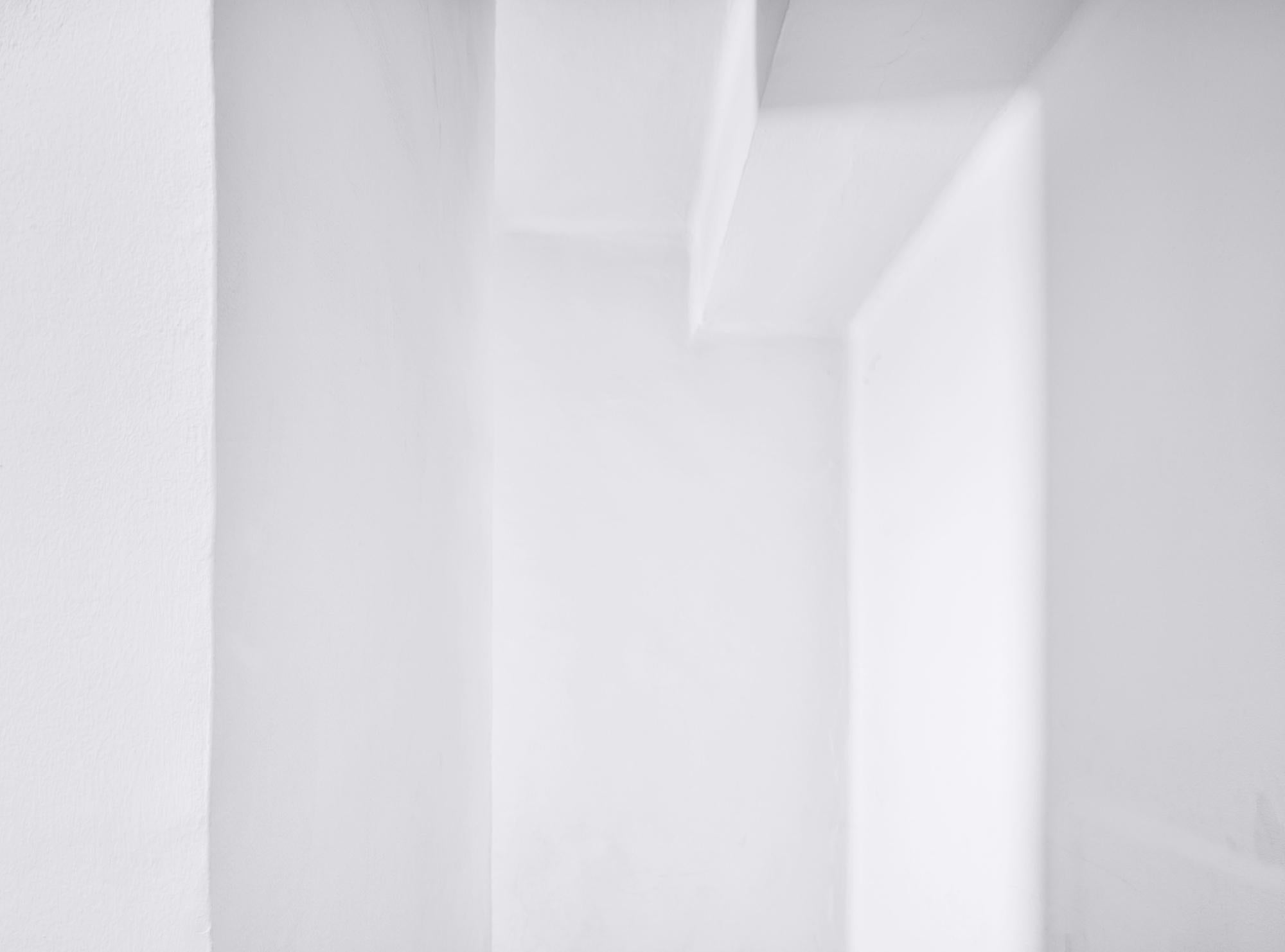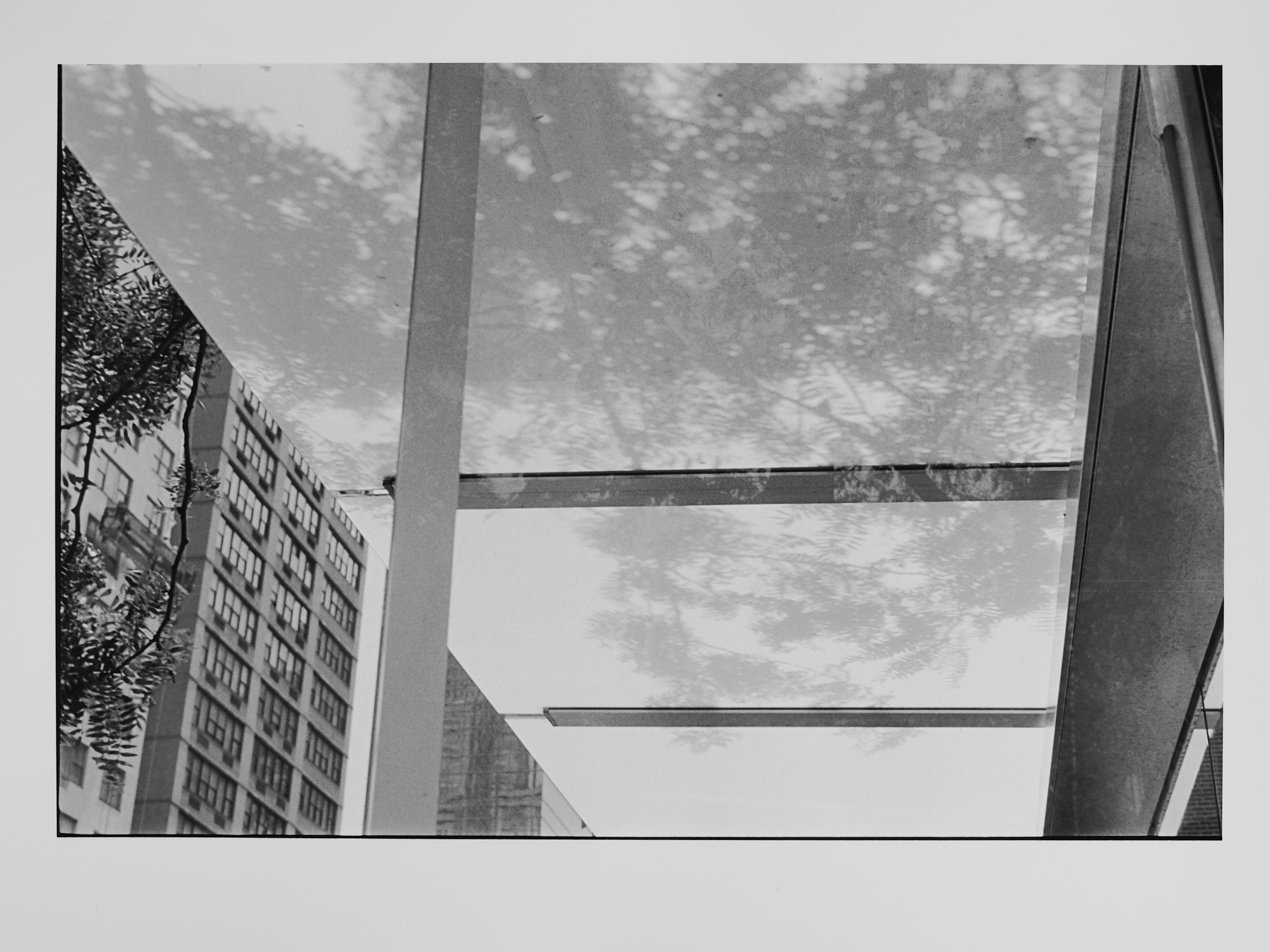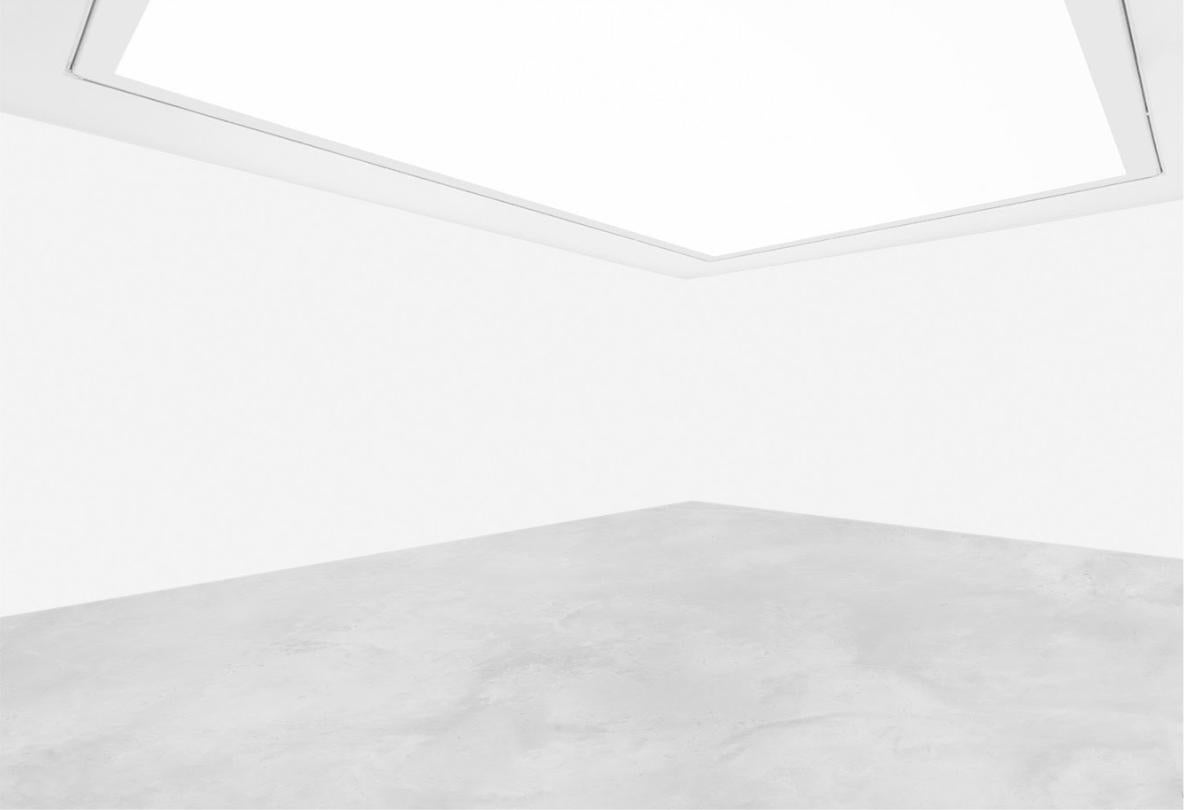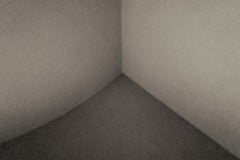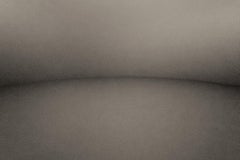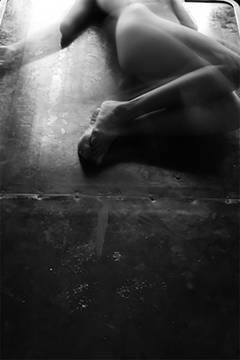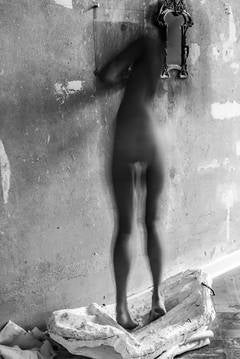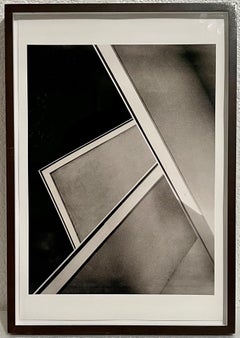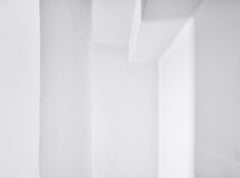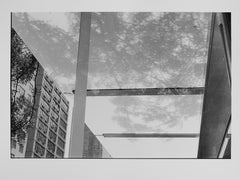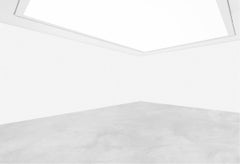Items Similar to Corner No. 02 at the Guggenheim Museum
Want more images or videos?
Request additional images or videos from the seller
1 of 5
Kenji AokiCorner No. 02 at the Guggenheim Museum2018
2018
Price Upon Request
Price Upon Request
Price Upon Request
Price Upon Request
Price Upon Request
Price Upon Request
Price Upon Request
Price Upon Request
Price Upon Request
Price Upon Request
About the Item
Corner 2018
No.1, No.2, No.3
The origin of “space”
20 x 30 inches
Platinum print
Signed and numbered edition of 5
In our daily space recognition, information composed of multiple elements such as direction, distance, shape and size is perceived as space. The minimum element to visually perceive space is dots and lines. Mathematical “points and lines” are also the starting point of science, and are conceptual in common with the number 0 and do not exist as substances. This is because, even if it looks like a dots or a line, it looks like a “point” becomes a circle and a line becomes a surface.
On the other hand, our naked eyes can “find” dots and lines from anywhere in our daily lives, which appear at the intersection of two surfaces.This work is a landscape that gives perspective to the “corners” that are familiar to you but are not appreciated.
For me, “dots and lines” are the origin of space and the starting point of beauty.
Taken with a 35mm digital camera inside the Guggenheim Museum in New York. The resolution of the photography was technically broken down, and the particles which appeared were printed by using the chemical elements platinum and palladium using platinum printing*
*Platinum Printing
A photo printing technique using the precious metals platinum and palladium which was invented in the late 19th century.
Kenji Aoki’s creative endeavor started from studying drawings with his uncle, craft designer Mosuke Yoshitake, later enrolling at Kuwasawa Design School and learning the Bauhaus design philosophy, The Non-Objective World conceived by Kazimir Malevich. Driven by the concept of “Zero,” art such as Zen and spiritual philosophy in the Orient called “no object,” Kenji began to seek “non-object” from tangible things through photography. Since 1991, Kenji has been active as a still-life photographer, and his delicate and robust style with a unique color sense and minimalism was highly regarded in the industry. In 2008, Kenji started working with NY based photographer agent, Michel Ash and moved to New York in 2010. Since then, he has photographed for renowned publications such as The New York Times Magazine and TIME. and awarded The New York Times Magazine Photographs (edited by Kathy Ryan) and American Photography.
- Creator:Kenji Aoki (Japanese)
- Creation Year:2018
- Dimensions:Height: 20 in (50.8 cm)Width: 30 in (76.2 cm)
- Medium:
- Movement & Style:
- Period:
- Framing:Framing Options Available
- Condition:
- Gallery Location:New York, NY
- Reference Number:1stDibs: LU3267914532
About the Seller
5.0
Gold Seller
Premium sellers maintaining a 4.3+ rating and 24-hour response times
Established in 1996
1stDibs seller since 2013
739 sales on 1stDibs
Typical response time: 1 hour
- ShippingRetrieving quote...Shipping from: New York, NY
- Return Policy
Authenticity Guarantee
In the unlikely event there’s an issue with an item’s authenticity, contact us within 1 year for a full refund. DetailsMoney-Back Guarantee
If your item is not as described, is damaged in transit, or does not arrive, contact us within 7 days for a full refund. Details24-Hour Cancellation
You have a 24-hour grace period in which to reconsider your purchase, with no questions asked.Vetted Professional Sellers
Our world-class sellers must adhere to strict standards for service and quality, maintaining the integrity of our listings.Price-Match Guarantee
If you find that a seller listed the same item for a lower price elsewhere, we’ll match it.Trusted Global Delivery
Our best-in-class carrier network provides specialized shipping options worldwide, including custom delivery.More From This Seller
View AllCorner No. 01 at the Guggenheim Museum
By Kenji Aoki
Located in New York, NY
Corner 2018
No.1, No.2, No.3
The origin of “space”
20 x 30 inches
Platinum print
Signed and numbered edition of 5
In our daily space recognition, information composed of multiple elements such as direction, distance, shape and size is perceived as space. The minimum element to visually perceive space is dots and lines. Mathematical “points and lines” are also the starting point of science, and are conceptual in common with the number 0 and do not exist as substances. This is because, even if it looks like a dots or a line, it looks like a “point” becomes a circle and a line becomes a surface.
On the other hand, our naked eyes can “find” dots and lines from anywhere in our daily lives, which appear at the intersection of two surfaces.This work is a landscape that gives perspective to the “corners” that are familiar to you but are not appreciated.
For me, “dots and lines” are the origin of space and the starting point of beauty.
Taken with a 35mm digital camera inside the Guggenheim Museum in New York. The resolution of the photography was technically broken down, and the particles which appeared were printed by using the chemical elements platinum and palladium using...
Category
2010s Abstract Black and White Photography
Materials
Platinum
Price Upon Request
Corner No. 03 at the Guggenheim Museum
By Kenji Aoki
Located in New York, NY
Corner 2018
No.1, No.2, No.3
The origin of “space”
20 x 30 inches
Platinum print
Signed and numbered edition of 5
In our daily space recognition, information composed of multiple elements such as direction, distance, shape and size is perceived as space. The minimum element to visually perceive space is dots and lines. Mathematical “points and lines” are also the starting point of science, and are conceptual in common with the number 0 and do not exist as substances. This is because, even if it looks like a dots or a line, it looks like a “point” becomes a circle and a line becomes a surface.
On the other hand, our naked eyes can “find” dots and lines from anywhere in our daily lives, which appear at the intersection of two surfaces.This work is a landscape that gives perspective to the “corners” that are familiar to you but are not appreciated.
For me, “dots and lines” are the origin of space and the starting point of beauty.
Taken with a 35mm digital camera inside the Guggenheim Museum in New York. The resolution of the photography was technically broken down, and the particles which appeared were printed by using the chemical elements platinum and palladium using...
Category
2010s Abstract Black and White Photography
Materials
Platinum
Price Upon Request
Infinite Exile: Ode to Sylvia Plath 3
By Jennifer Lin
Located in New York, NY
Infinite Exile, 2012
12 x 20 (editions of 12)
18 x 24 (editions of 12)
32 x 42 (editions of 6)
New York based artist Jennifer Mien Mien Lin’s (1983-) conceptual photography is ...
Category
21st Century and Contemporary Contemporary Black and White Photography
Materials
Archival Pigment
Infinite exile: Ode to Sylvia Plath 1
By Jennifer Lin
Located in New York, NY
Infinite exile: Ode to Sylvia Plath 1
32 x 42 inches
Edition of 6
Collection photographed in Berlin based on Sylvia Plath’s poem Ariel.
New York based a...
Category
21st Century and Contemporary Contemporary Black and White Photography
Materials
Archival Pigment
Infinite exile: Ode to Sylvia Plath 2
By Jennifer Lin
Located in New York, NY
Infinite exile: Ode to Sylvia Plath
Archival pigment print
32 x 42 inches
Edition of 6
New York based artist Jennifer Mien Mien Lin’s (1983-) concep...
Category
21st Century and Contemporary Contemporary Black and White Photography
Materials
Archival Pigment
Price Upon Request
Joseph Beuys & Nam June Paik, Sogetsu Hall Tokyo, Japan
By Paul Garrin
Located in New York, NY
Joseph Beuys & Nam June Paik, Sogetsu Hall Tokyo, Japan, 1982
Vintage silver gelatin print
11 × 14 in
27.9 × 35.6 cm
signed
Category
1980s Conceptual Black and White Photography
Materials
Silver Gelatin
Price Upon Request
You May Also Like
Brazilian Conceptual Modernist Photograph Jose Yalenti Architectural Abstract
Located in Surfside, FL
José Yalenti, (1895-1967) Brazilian Photographer
"Beiras" (Sides)
Photo, numbered 5/15, circa 1950, (printed later) on premium luster photo paper with ultrachrome ink.
Art: 15" H x 11" W; Frame: 20 1/4" H x 14 1/4" W.
Provenance: Dickinson Roundell Gallery
José Yalenti’s Architecture photos seem at first disorienting, abstract black & white and grey surfaces, cut through by startlingly straight lines and a variety of surface textures. Much of his work is of mid-century Latin American architecture, by the likes of Oscar Niemeyer and Roberto Burle Marx.
José Yalenti was born in São Paulo, Brazil in 1895. On April 28, 1939, a group of photography aficionados, including Yalenti, formed the Foto Clube Bandeirante, later changed to Foto Cine Clube Bandeirante, or FCCB.
Starting in the late 1940s, a contingent of FCCB photographers began creating photographs of abstracted architectural motifs (as in Architecture or Twilight), and eventually became known as the Escola Paulista, or “Paulista School.” Yalenti was among the members of the unofficial Paulista School. Between 1945 and 1960, the Paulista School photographers explored the rapidly changing formal qualities of São Paulo. By photographing skyscrapers and stairways at steep angles, creating closely cropped compositions from found geometric motifs, and capturing the flattening effects of shadows, Paulista School photographers investigated the new physical perspectives emerging in the urban environment. They created a distinctively Modern aesthetic that used strong contrasts of light and dark, geometric forms, linear compositions, and collapsed space to assert photography’s status as an artistic medium.
As part of their pursuit of photographic Modernism, Yalenti and his fellow Brazilians adapted the stylistic innovations of U.S. and European photographers such as f.64, New Objectivity, Dada, Surrealism, and the Bauhaus, to the Brazilian context. Along with his FCCB compatriots—Thomaz Farkas, Geraldo de Barros, and German Lorca, among others—Yalenti explored the formal properties of black-and-white image-making.
Yalenti and the Paulista’s School’s abstract photographs responded to the new trends in Brazilian Modernist architecture being developed by young architects in São Paulo and Rio de Janeiro. In 1939, Lúcio Costa, Oscar Niemeyer, and Affonso Reidy broke ground on the Ministry of Education and Health Building (MES), the building that would define Brazilian architectural modernism. The Rio-based team combined elements of Le Corbusier’s undecorated structural purity with Brazilian regional design to produce a more organic and “tropical” Modernism that responded to the local culture and climate.
The sinuous and sensuous curves of Yalenti’s photograph are directly influenced by stylistic developments in architecture at the MES, including the building’s covered entry and its organically abstract contours. By 1957, when Yalenti created Architecture or Twilight, Brazil was globally recognized as an architectural leader. MoMA in New York City organized a popular exhibition of Brazilian architecture in 1943 (“Brazil Builds”), and highlighted the country again in its survey show "Latin American Architecture since 1945," that ran from 1955–56. Brazilian photography...
Category
20th Century Modern Black and White Photography
Materials
Photographic Paper
Suprematism Nr. 104 Aranzazu – Ola Kolehmainen, Contemporary Photography, Art
By Ola Kolehmainen
Located in Zurich, CH
Ola KOLEHMAINEN (*1964, Finland)
Suprematism Nr. 104 Aranzazu, 2020
2 Ink prints in Artist Frame
Sheet 104 x 129 cm (41 x 50 3/4 in.)
Edition of 4, plus 2 AP; Ed. no. 1/4
Framed print
About Back to Square Black:
In his new series 'Back to Square Black', Ola Kolehmainen examines both art history and his own personal timeline. The multi-layered nature of history is the connecting thread that runs through his latest works, which take their cue from The Black Square, the iconic 1915 painting...
Category
2010s Contemporary Color Photography
Materials
Inkjet
Untitled (0828-22A, Nyc), Original Black and White Photograph of NYC, 2014
By Koyo Tamaki
Located in Boston, MA
Untitled (0828-22A, Nyc), Original Black and White Photograph of NYC, 2014
Artist Commentary:
This is the first print in an edition of five. Approxi...
Category
21st Century and Contemporary Contemporary Abstract Photography
Materials
Silver Gelatin
Untitled 13 from the series of INtheVISIBLE, 2013
By Arslan Sükan
Located in Miami Beach, FL
Sukan’s photographic work explores the conventions of the modern white cube as both an architectural context and as a content subject in and of itself. By addressing the notions of s...
Category
2010s Contemporary Black and White Photography
Materials
Archival Pigment, Photographic Paper, Black and White
Untitled (0422-28), Abstract Photograph on Gelatin Print, 2011
By Koyo Tamaki
Located in Boston, MA
Artist Commentary:
Koyo creates a somewhat sinister, evocative image in this photograph of flickering daylight against closed doors.
Keywords: photography
Artist Biography:
Koyo T...
Category
21st Century and Contemporary Landscape Photography
Materials
Silver Gelatin
Untitled #6 – Dominique Teufen, Photography, Abstract, Black and White, Art
By Dominique Teufen
Located in Zurich, CH
Dominique TEUFEN (*1975, Switzerland)
Untitled #6, from the series 'The Presence of Absence', 2018
Hahnemühle photo rag
Sheet 105 x 70 cm (41 3/8 x 27 1/2 in.)
Frame 115 x 80 x 3.5 ...
Category
2010s Contemporary Abstract Photography
Materials
Pigment
